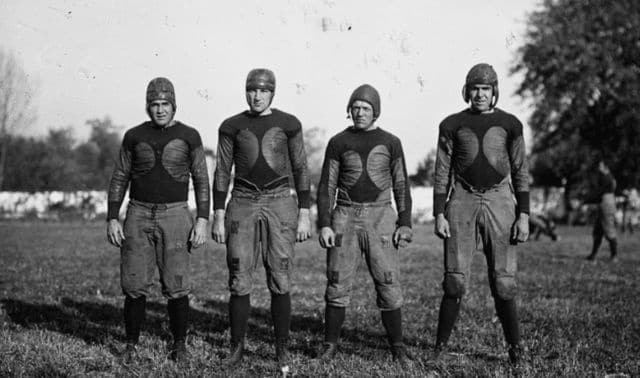Sign up for the Family Tree Newsletter! Plus, you’ll receive our 10 Essential Genealogy Research Forms PDF as a special thank you.
Get Your Free Genealogy Forms
"*" indicates required fields
It’s not an invention that’s often thought of, but it always comes in handy. When the summer heat rises, you’ll be thankful for the ingenuity of the unheralded Dr. Wheeler, who has yet to even be inducted into the Inventors Hall of Fame (which does, however, have a place of honor for Willis Carrier, inventor of the air conditioner—a feat clearly impossible without the electric fan). The smelly truth is that our ancestors, bereft of such technology, spent their summers being hot and sweaty.
Lotus leaves and peacock feathers

People have been fanning themselves by hand for millennia, of course—or, like the ancient Egyptians, making slaves fan them with huge lotus leaves. The Egyptians also caught on to the trick of fanning air across wet mats or water-filled vessels for evaporative cooling. The Greeks and Romans preferred peacock feathers for fanning; Roman emperors added the cooling power of snow hauled down from the Alps.
ADVERTISEMENT
The Japanese invented folding fans in the eighth century, possibly inspired by the way bats fold their wings. But the heyday of the handheld fan was China’s Ming Dynasty (1368 to 1644), when exquisitely painted fans were all the rage. Portuguese traders brought Asian fans to Europe in the 1400s.
The Chinese were also pioneers in mechanizing the fan. About 180 AD, the famed Han dynasty inventor Ting Huan created a rotary fan employing seven wheels, each 10 feet in diameter, by which a single man could cool an entire hall. Later rotary fans were used not only for cooling, but also for winnowing grain and ventilating mine shafts.
That Roman idea of combining a fan with ice or snow resurfaced in the 19th century’s early attempts at air conditioning. In 1830s Apalachicola, Fla., John Gorrie (1803-1855), an American physician, blew air over a bucket of ice to cool hospital rooms for malaria and yellow-fever patients.
ADVERTISEMENT
When President James Garfield was shot in 1881, US Navy engineers came up with a contraption combining a fan and iced cloths, which dropped the temperature of the dying president’s room 20 degrees—while consuming 436 pounds of ice an hour.
Development of electric fans
But all these cooling devices relied on human- or horse-powered fans. Then, a year after Garfield’s assassination, Wheeler (1860-1923) figured out how to apply the fledgling science of electricity to make a fan turn. Drawing on the work of Thomas Edison and Nicola Tesla, Wheeler invented a desktop fan consisting of two blades—unshielded by any sort of protective cage—powered by an electric motor. The fan was marketed by the Crocker & Curtis Electric Motor Co.
Wheeler went on to prominence in the Institute of Electrical and Electronics Engineers (IEEE). In 1901, he purchased the library of J. Latimer Clark, a British electrical engineer, and donated it to the American IEEE with the stipulation that the group provide a suitable building to house the Clark Collection.
With a $1.5 million boost from Andrew Carnegie, this led to the 1907 founding of the Engineering Societies Building in New York. Wheeler later became president of the IEEE.
Meanwhile, the further development of the electric fan fell to Philip H. Diehl, a German immigrant who’d lost everything in the 1871 Chicago fire. Diehl pulled up stakes for the East Coast, where he went to work for the Singer Sewing Machine company.

He took a sewing-machine motor, mounted a fan blade and attached the whole thing to the ceiling—thereby inventing the ceiling fan, which he patented in 1887. Later, as head of his own company, Diehl added a light fixture to the ceiling fan. In 1904, Diehl and Co. put a split-ball joint on an electric fan, allowing it to be redirected; three years later, this idea developed into the first oscillating fan.
Fans caught on rapidly. By 1910, Westinghouse was marketing an electric fan for household use with the claim that the electricity to operate it would cost only one-fourth of a penny per hour.
Self-contained window fans, made of plastic instead of metal, were introduced in 1934 by Vent-Axia, a British company. In 1937, the development of a new plastic laminate for coating fan blades, Micarta, made fans quieter and less likely to warp or corrode.
The big chill: air conditioning
Meanwhile, however, Carrier (1876-1950) was perfecting the invention that would leave Wheeler’s humble electric fan in the dust of history. Inspiration struck Carrier while he waited for a train on a cold, foggy night; by the time his train arrived, he’d grasped the interrelationship of temperature, humidity and dew point.
Carrier built his first air conditioner in July 1902—not to cool people, but to keep paper cool and dry at the Sackett-Wilhelms printing plant in Brooklyn. Soon Carrier’s invention was cooling movie theaters, department stores and even, by 1929, the US Congress.
Along with the elevator, air conditioning made modern skyscrapers practical. You could even say that air conditioning transformed the nation, cooling the sweltering Sunbelt so hordes of Americans could be tempted to move there.
In parts of the desert Southwest, however, a simple variant on Schuyler Skaats Wheeler’s electric fan continues to cool much of the population: The “swamp cooler,” or evaporative cooler, developed in the 1930s, blows air through water-dampened pads—much as the ancient Egyptians did. As the water evaporates, it absorbs heat and cools the room, making unnecessary the air-conditioning gizmos Southwesterners refer to as “refrigerated air.”
Electric Fan History Timeline

Frenchman John Theophilus Desagulier invents the paddle fan to ventilate mines

Schuyler Skaats Wheeler invents the electric fan

Philip H. Diehl patents the ceiling fan

German professor Hermann Rietchel publishes Guide to Calculating and Design of Ventilation and Heating Installations

Fans with more than two blades are produced

Willis Carrier invents air conditioning; oscillating fan debuts

Carrier reveals the Rational Psychrometric Formulae, still the basis for the science of air conditioning

Charles Gates’ Minneapolis home is the first air-conditioned house, at a cost of $10,000

Carrier replaces ammonia with less-dangerous dieline as a coolant

Rivoli movie theater on Broadway in New York City gets air conditioning

Freon is invented

The Packard is the first car with optional “factory air”

US sales of window air conditioners top 1 million
Electric Fan History Resources
Antique Fan Collectors Association
Darryl Hudson’s Antique and Vintage Electric Fan Collecting
IEEE History Center and Archives
National Inventors Hall of Fame
A version of this article appeared in the November 2007 issue of Family Tree Magazine.
Related Reads
ADVERTISEMENT








